BLOG/WRITING
The Last Invention
'Machine intelligence is the last invention that humanity will ever need to make'. Nick Bostrom, Future of Humanity Institute, Oxford
The following is a short 'essay' of sorts that I wrote to accompany an 'exhibtion' I posted on this website in January 2023.
Thou shalt not make unto thee any graven image
Here are my own (not machine generated) human observations and opinions of the experience of working with text-to-image AI, and also some thoughts about the technology from the point of view of an occupational fine and applied artist. I'll be curious to re-read these impressions a year or two from now to see if my current AI anxieties still exist. There are some links in bold font.
Thou Shalt not steal
There seem to be two opposite views of the AI/art issue; one is that high anxiety is hysteria and moral panic and that this technology is just another technology (often compared to photography). The other view is that the technology is not like previous technologies, and that we are treating it with a 'normalcy bias' and human prospects will continue as usual. There are presumably many views in between. But given the abilities of text-to-image AI in these very early days, and generally confining speculation of AI's effects on the role of occupational artist in our society, my situational awareness in regard to AI is on the side of high anxiety.
I expect text-to-image AI to be catastrophic for visual artists. AI is not a tool for artists, it's a replacement of them. Artists are a means of production and AI is a vastly more powerful means. I would be enormously happy to be mistaken about this. Currently AI is owned by corporate entities often acting under the guise of being 'research labs' and use 'data laundering' through researchers to steal from human artists with low risk of copyright infringement. Compare AI to Amazon Mechanical Turk ('artificial artificial intelligence), in which human workers are exploited by being poorly paid for micro-tasks that are aggregated by machine. Anyone who is exploitable has value and at least some small degree of recourse to react against their exploiters, particularly when organized. The current text-to-image AI is structured to steal art from human creators for no compensation by scraping the internet of their work to make images. This makes artists of even less value than others who are exploitable. AI thievery, by removing value from human artists leaves them with nothing of value to bargain with for compensation. Contrary to cunning public relations and advertising campaigns I fear there may be no safe 'collaboration' between human artists and machine imagery because the power relationship between them is so asymmetrically in favor of the AI and the corporations behind it.
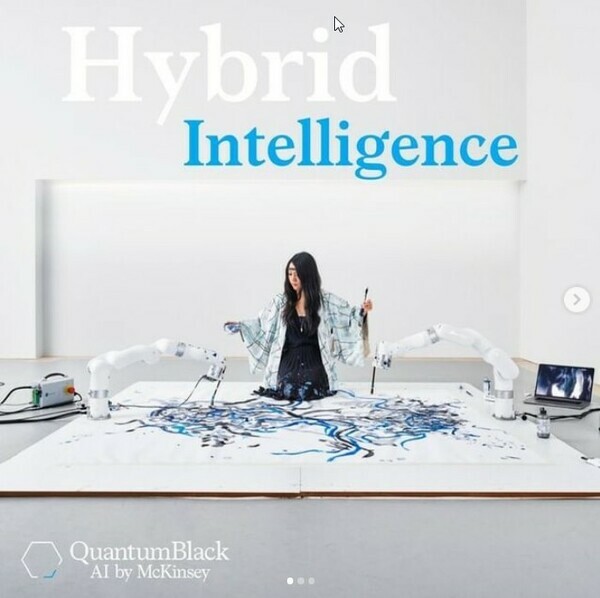
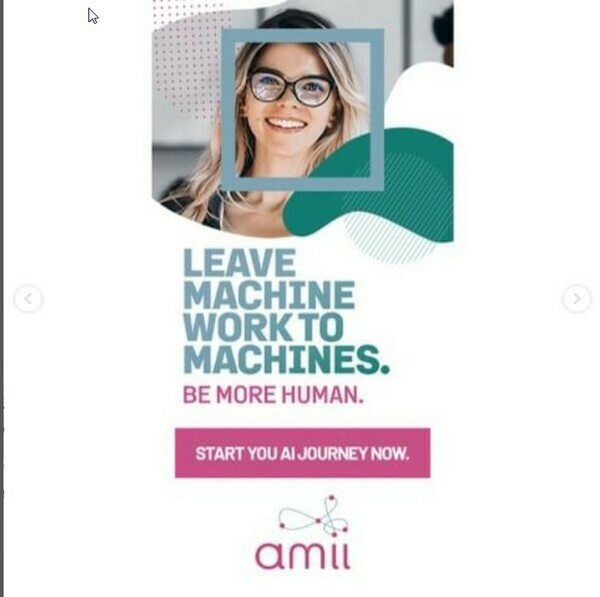
The machine in the ghost
I don't believe there is such thing as a human 'AI artist'. Humans are mere operators of machine intelligence. Consider that humans who have no awareness of how to describe form or make visual art can now with a few words prompt an even more unaware machine intelligence to generate astonishing results that can be mistaken for the work of trained human artists. We aren't talking about a sentient machine intelligence. This is a chilling, empty, oblivious, zombie intelligence that even in these early days mimics the results of human creativity such that experts cannot reliably discern what is AI and what is human. I might delude myself into believing that I can reliably perceive which of two images is human and which is AI. I might convince myself this would be the result of my practical art expertise, experimentation with, and observation of, AI and it's foibles. But I would usually have to end up guessing and would probably do no better than anyone else. By contrast, AI itself will do a much better job of recognizing what is AI and what is human, that is, there might be AI apps that can more reliably discern what is probably an AI creation; text, art, film or photo. Think of apps like Pl@antNet which identifies herbs and other flora. You simply photograph something and, depending on the quality of your quick snap it will give you astonishingly good percentage probabilities of the species you are looking at. Several similar species and their probability of matching will be further supplied in mere seconds. Consider also facial recognition. Beyond the issue of 'what is art' AI raises, entity fraud, AI's ability to fake human creativity, has alarming implications for human society and human connection, with the only way of discerning authenticity existing being a similar machine intelligence. For me, anachronistically perhaps, it has always been the humanity of art and literature that has has provided empathy and wonder. Art objects that we believe to be fabricated by other humans with fears and desires not unlike our own don't just communicate with human observers, but, through emotive recognition observers feel able to respond back. Believe no more, and even if we respond to AI art all it will do is collect our data and mechanically use it to make more of the stuff we want. With AI there is no entity to connect with, although we might be fraudulently led to believe there is. At least until if and when a self aware artificial general intelligence comes along (this is also anxiety provoking) we will be interacting with philosophical zombies that 'pass' our best Turing Tests. We will not know what is authentically human and what is a machine hallucination; their hallucinations will be ours. Hallucination and losing touch with reality has previously been in the domain of mental illness. We already exist in a digital world with vast quantities of false and untrustworthy images and information that feed paranoiac and delusional highly infectious conspiracy theories that seem analogous with mass hysteria. It is probably going to get worse.
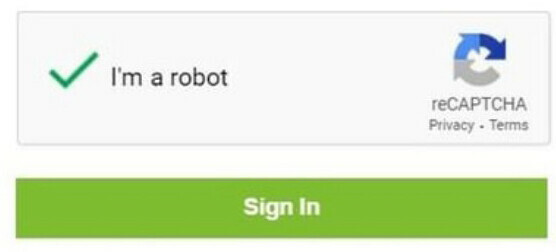
It's a strange world after all
As a visual artist I aspire to observe and represent the world, and in doing so often shift to an uncanny, surreal, non-standard viewpoint in order to emphasize the strangeness of a visual world most non artists take for granted. Being from the 20th century I have believed this aspiration is shared by other artists and is one of the qualities of interesting and, if you will, 'good' art. I discovered that by limiting prompts in AI a similar uncanny quality can more readily be induced. AI art imperfections in these early days make results more surreal, abstracted, interesting and art-like.
'Experts' (not surprisingly in this day and age these are considered to be critics, art historians and gallerists rather than actual working artists) look for 'flaws' in the AI art, as do most people making comparisons. This is odd considering the similar extensive 'flaws' in human art. AI is currently notorious for frequent anatomical distortions but consider and compare the distorted figurative art of great artists like Pontormo or Ingres or more modern artists that further stylize and distort the human form in uncanny surreal ways.
In comparison to AI art, as a trained working artist I (nevertheless subjectively) perceive an enormous amount of human art to be not very good. Whereas it seems to me from using AI an enormous amount of AI art is quite good to very good and is furthermore produced almost instantly. Because even better results after results can quickly be generated, AI exponentially outpaces the efforts of the human artists it steals from. As a working artist I have worked long and hard for days, weeks or months and failed to come up with anything that I considered 'good' or even acceptable to my (nevertheless subjective) self. For human artists, the exceptional is truly the exception.
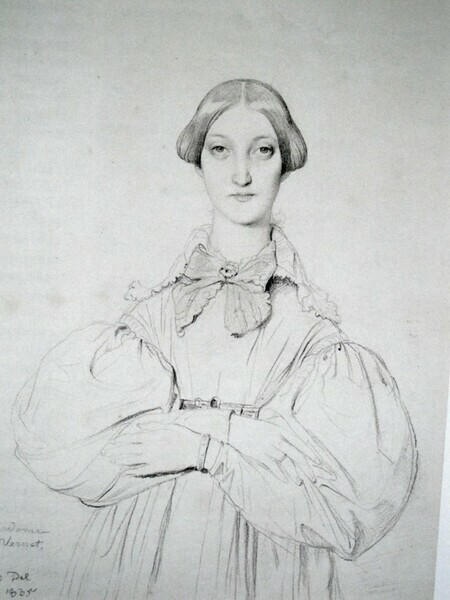
Anatomically freakish Ingres drawing.
Curationism.
AI produces images/art rapidly and in enormous quantities. It is cheap. It will meet deadlines. It won't be petulant. It won't call in sick. It won't become constipated with creative blocks. It won't drink or take drugs. It won't succumb to despair. And it won't condescend to whoever requires its 'skills' or services. It will fulfill a much beloved contemporary art neo-Duchampian 'curatorial' dream for operators who will be gratified with a sense of delusional authorship for what the AI has generated.
Why Bother?
I suspect artists 'good' or 'bad', are increasingly thought of as 'content providers', an appalling term which demystifies and undermines traditional notions of art as something 'made special'. As content providers visual artists will never ever be able to compete with the content provider AI. The day may be fast approaching when almost all cultural content is produced by machines that, as a result of having access to personal data, will be able to accurately predict what you desire when you want to look at visual art, watch a movie, read a novel, or listen to music. It will then provide content so tailored to your sensibilities that you will consider it your own, identifying with it as with a brand. This will provide incredibly entertaining content. But that content might also be the painting you vaguely imagined you might create. Or the novel you had in mind. Or the movie or music you imagined you'd compose. AI might not just steal from past artists, but also future ones. AI might steal from your imagination well before you can create a work of art. (Ever wonder how Amazon manages to so quickly get a product to to the region you live in?) If you do in fact undertake a creative process, it will take so long AI can in the meantime make quantities of similar iterations to your content, most of which will be as good and much of which will be better. As an artist I confess that using AI to conjure imagery leaves me with a gnawing question for the future. 'Why bother?'.
Unstable Diffuser
Almost as soon as Midjourney text-to-image AI became publicly available I subscribed and tried using it as a tool, something I believe it was not designed to be (AI being a means of production and replacement for artists). I used AI to generate compelling (for me) 'unnatural-natural' forms and 'folk' forms from which to draw. These drypoint prints are a product of rediffusion; diffusion from nature by an artist other than me in their renderings, diffusion of those renderings to the internet, diffusion from those internet images being 'scraped' and transmogrified by machine intelligence, and further diffusion by my elaboration, re-drawing and printing. If diffusion describes broadcasting (from the French) information rediffusion describes re-broadcasting. When I was a child there was actually a broadcasting company called 'Rediffusion' which rebroadcast radio and television programs on it's networks. I thought the name might make a good title for this 'exhibition'.
It's worth considering the six months of regular sustained effort it took me to create these drawings and prints from AI reference to the minutes that would be required to generate a similar quantity of AI jpgs that might be similarly compelling and apparently human.
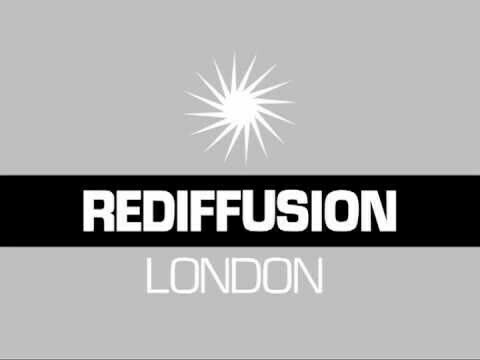
Logo for Associated Rediffusion.
File under futile
A way of looking at my simple and straightforward approach to AI is as a morphing search engine providing images not 'of' but 'in the manner of' the sort of thing I've consistently been interested in over my visual life. When I walk on a beach or through the natural world and pick up and collect forms that interest me or that I might like to draw, I am a bipedal search engine. Like many artists and illustrators I collected art books and magazines for reference and ripped pages out to put in labelled files in cabinets as searchable accumulated visual reference. More recently I created files in my computer of a vast number of things visual that interested me during image searches. For this exhibition I searched for and created jpg reference files of AI generated material to work from.
All watched over by machines of loving grace
I've long been interested in AI and it's potential, like so much technology, to either create a utopia or a dystopia that would deprive humans of paid work, meaning and dignity, or much, much worse. I was astonished at AI's early arrival in my own apparently innocuous occupation, the visual arts. I find it worth bearing in mind some of the deeper general motives behind the development of AI, for example the quest for autonomous weapons. The worlds first autonomous weapons already exist and this prospect is so alarming that even some scientists who work with AI have issued warnings about how the technology might unfold. It is easy to envision AI research as an arms race between world powers. But minor powers and groups can be part of this new, non-nuclear, arms race because the weapon of AI does not require an extensive military industrial complex and therefore AI weapons will be easier to produce and proliferate. I'm not adverse to the miracles of technology and science, but I'm from an era when scientists were regarded with a justifiable degree of suspicion for their role in creating weapons of mass destruction and technology with unintended consequences. If you consider the greatest existential risk currently assessed by experts in the field most of what threatens to wipe humanity out is technology and science. I'm often perplexed at the cult-like enthusiasm for scientists today, relative to how they were often viewed in the past.
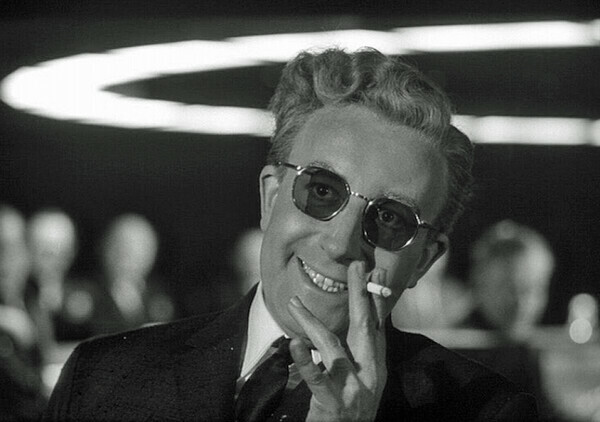
Dr. Strangelove, from the Stanley Kubrick film.
Erewhon
Luddite is a word that is now generally used in contempt. But I have a fonder attitude toward the Luddites of days past. Their lucid situational awareness provided a correct assessment of the threat of machines to their livelihoods and way of life and despite persecution they made attempts to leverage their weakening position through vandalism of machines (for which some were apparently executed. They failed in their quest and mechanization and operators replaced them. In the imaginary future Dune's Butlerian Jihad is a holy war in which humans rebel against thinking machines. They succeed. In William Gibsons Neuromancer the Turing Police stifle any untoward advances in potentially dangerous AI. Vandalism, Jihads and policing aside, one of the better hopes for containing 'AI art' might be litigation, considering the original sin of text-to-image AI is theft. At the time of writing these observations a class action lawsuit against some of the larger corporate AI players has been initiated.
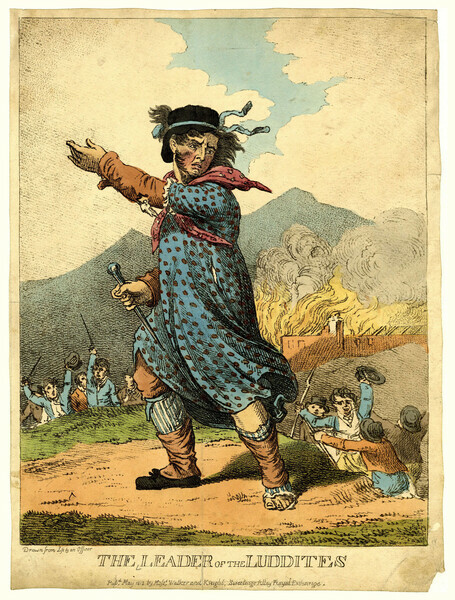
Ned Ludd, alleged founder of the Luddites.
I have little interest in artist's statements, and never want to write something that explains in words what I might be doing with images. I never want an image to 'say something'. If I want to say something I just say it, or write it, which would undermine the purpose of making visual art. However, artists and curators statements are an (annoying!) part of the contemporary art experience and so at the top of the page I had the AI text generator Chat GP-3 generate a couple of paragraphs.
My observations about AI are mainly to do with images. It has been a premise for artists, and certainly for me, that their unique contributions to the visual arts, no matter how modest, are nevertheless special and unique regardless of how well recognized, because of their humanity. The plague of unique images to be released by AI undermines whatever remains of that belief in me, which is saying something after having lived my life in an age of mechanical reproduction which had already steadily eroded this notion.
But I'm also astonished at how coherently AI writes. Both AI image and text generation seem to me to reveal how algorithmic, cliched, predictable and derivative most human creativity might now seem, including my own. If delusional overconfidence has been a problem for humans and human artists, a malaise of lack of confidence might be in store for humanity and add to the societal problems that AI creates. I suspect AI will erode the generally acknowledged human belief that we are all unique and have something special to offer by our industry and labour.
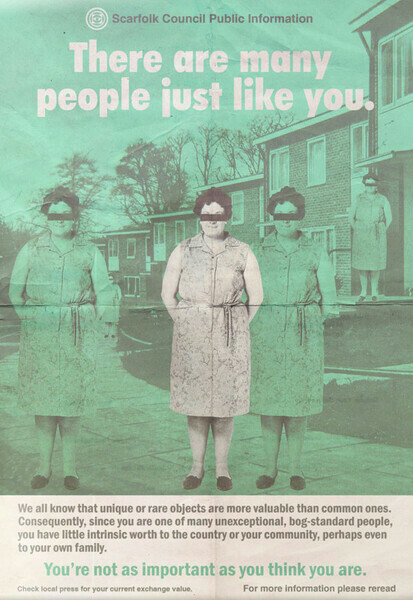
Scarfolk Council poster from an alternate historical nineteen seventies UK nails it.
For the love of humanity
A faint personal hope for the future of human art is that buyers and lovers of art will value what is human over what is machine made. However, history does not bode well in this respect. Consumers already prefer cheaper, profuse, high quality machine-made objects over more expensive, scarce, variable quality hand crafted human ones. In the visual arts the number of artists who offer machine produced reproductions is cause for dismay, as is the number of 'art appreciators' who purchase them rather than original art.
There is also the fact that humans can't actually tell the difference between AI art and human art, at least when reproduced on a screen which is how most art images are now viewed.
In my lifetime, when technology has previously replaced labour it seems to generally to have been the labour of the working classes. Anecdotally I've observed well paid factory and skilled trades work replaced by robots and CNC machinery. In retrospect there doesn't seem to have been an enormous concern by society in general for displaced blue collar workers who at the least seem to have been treated very shabbily after losing employment. Will the response to this new technology be different? AI seems as capable of replacing not just artists but also well paid white collar managerial arts technocrats such as curators, art educators and administrators. In society at large teachers, lawyers, programmers, doctors, journalists...knowledge workers...and many other professional occupations might face massive layoffs and redundancy. AI seems to have the potential to wreak havoc among higher value occupations and therefore might receive greater societal push back. For me there is hope in the trashing of intellectual and occupational elites by AI. Perhaps they'll throttle it's deployment to save their own skins if not the skins of ordinary folks.
The future is short
Just prior to writing these notes I cancelled my subscription to Midjourney. In what time remains to me I'm going to be more interested in what human beings do more than machines.
January 2023